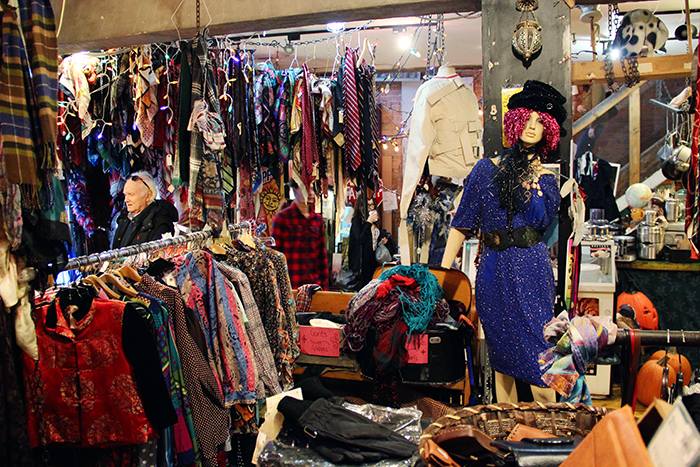For most McGill students, the term “thrifting” inspires a host of sensory images—dusty fur coats and yellowed lace, Grandma Martha’s prom dress, those perfect light-wash Levi’s shorts with just the right amount of distress, and an astounding quantity of unnamed articles from the ‘70’s. From Value Village to vintage boutiques on St-Laurent, Montreal offers a range of thrift stores for McGill students to choose from. Few thrifters, however, stop to consider the bounty of jeans, sweaters, and shoes that the stores provide to families living on a hand to mouth budget. Many cannot afford the indulgent experience of shopping at a local Roots. Consequently, when the more affluent shopper thrifts without thought, under the assumption that the concept originated for them and has always been theirs, they are appropriating the idea of thrifting.
While thrifting has increasingly become a trend amongst the financially stable, particularly teenagers and young adults, the idea of second-hand apparel offered at a discounted price was originally intended to appeal to a far different audience. Organizations such as the Salvation Army and Goodwill were founded on the principles of providing affordable clothing options for lower-income families, as well as job opportunities through community networking and fundraising. Although initially targeted at those unable to shop at full price stores, such organizations appeal to the broader population because of several key factors: The clothes are cheap, they come in bulk, and for the environmentally responsible, they are sustainable. With changing trends and a social tendency to look to the past for fashion cues, these stores also provide people with easy and cheap access to vintage and quirky clothing.
Over time, the traditional warehouse-type stores gave birth to pricier, boutique thrift stores, such as Eva-B, KILOfripe, and Le Chaînon inc. near campus, where the type and quality of the clothing are more strictly curated.These stores are inaccessible to those who truly rely on thrift shopping and instead target the prototypical Montreal hipster and trend-chasing college student with money to spend. The Salvation Army, on the other hand, seeks to provide economic opportunities for those simply seeking to clothe their children in winter without breaking the bank. In major cities such as Toronto and New York, some stores–still dubbed “thrift”–offer designer brands and expensive labels, where a jacket or blouse might still come with a hefty price tag. Urban Outfitters has even begun to integrate recycled yard sale items into their clothing lines, by making them into pricy “custom” dresses and tops marketed as vintage. Shopping at any one of these variations of pseudo-thrift stores is thereby not an act of economic valiance, but rather one of privilege, as the items may cost as much as—if not more than—other full priced clothing stores.
Thrifting in itself is not inherently wrong; it may be done for a variety of cost-effective or environmentally friendly reasons. However, self-proclaimed, middle-to-upper-class thrifters must understand its origins and social implications. The increasingly large rift between economic classes widens and tensions arise when one group treats another’s needs as a commodity or past-time activity. While thrifting might be a seemingly inconsequential factor in this process, on the broader scope of social reality where individuals of different economic positions work and live alongside one another, this tension makes it difficult to coexist without conflict. McGill students, if unaware of the implications of their trendy finds, are no better than any other ignorant thrifter, contributing to class divisions with each toss of fabric into their cart.
This doesn’t mean that each time a student’s friends drag them on a bargain bin dig or they pass through the doors of a Goodwill, there must be a mental giving of alms. However, understanding a basic background of thrifting, and what it means for others for whom it is a necessity rather than a leisurely Saturday activity, are useful steps in decreasing potential offence to shoppers who may come from different backgrounds or financial situations. It is this sort of attitude that permits cohabitation in the aisles, so that whether you’re searching for an off-brand summer staple or needing a marked down winter coat, thrifting provides a universally accessible option outside the retail norm.









